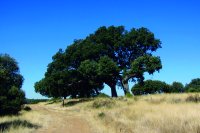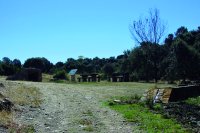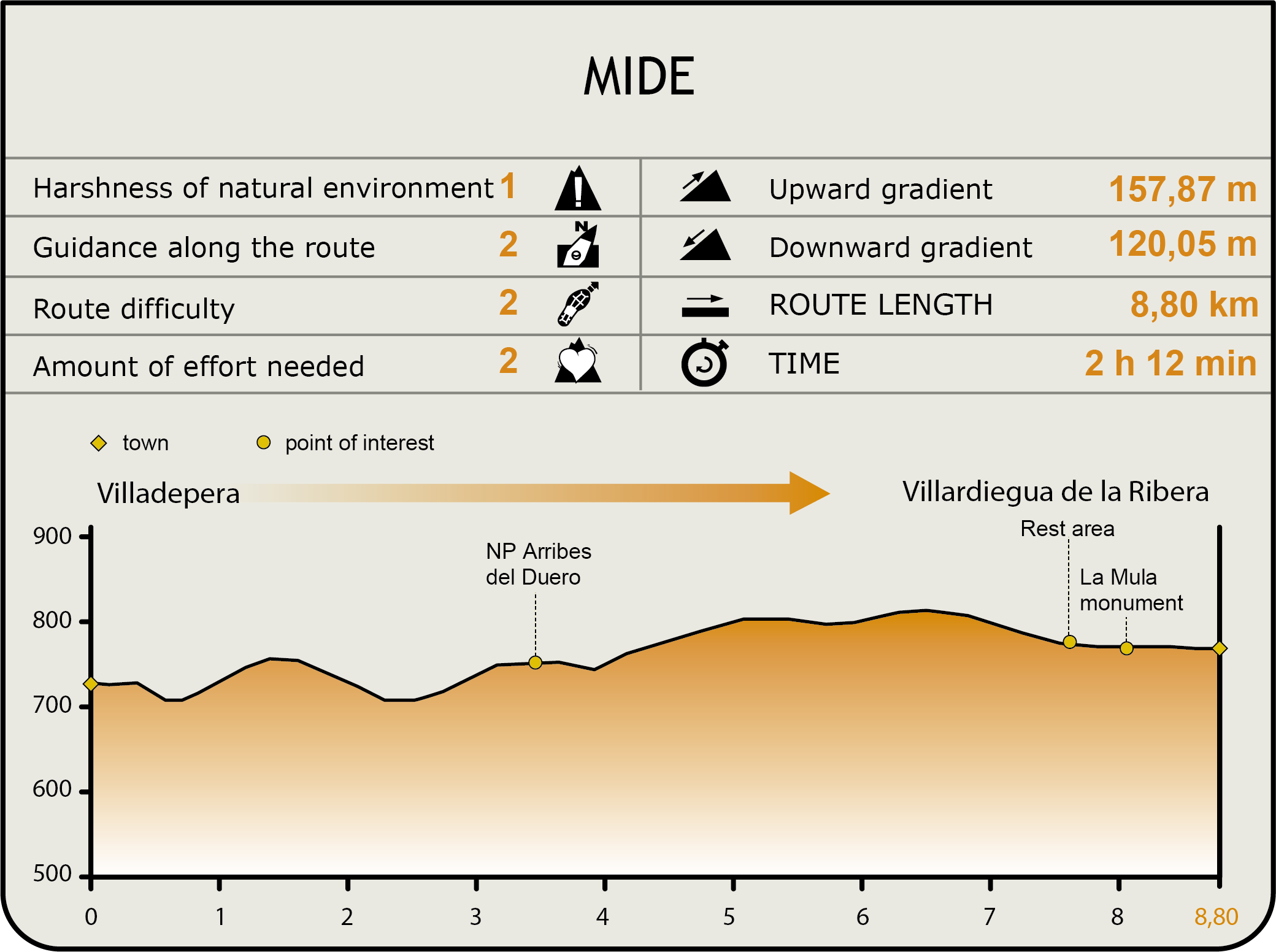Stage 22: Villadepera - Villardiegua de la Ribera
Description

The insurmountable barrier of Castro Reservoir
This Stage runs through holm oak forests and aromatic herb thickets. The route is flanked by a succession of creeks and small riparian stands that seek water and protection from the rigours of winter. The Duero Nature Trail crosses County Sayago, considered one of the most interesting and valuable nature areas in Europe.
The Stage begins in the town of Villadepera de Sayago, whose name derives from "Villa", a very common term in County Sayago, and "Pera", which refers to "petra", stone, a material easily found near the town.

The path leaves the village via the ZA-321 road that links Villadepera with Villardiegua de la Ribera. Further on, the route turns sharply to the left along a path running northwest through a forest. Holm oaks (Quercus ilex) dominate the landscape in this area.
The narrow path is flanked by a small stone fence as it passes through this site known as El Carril. Large stone slabs serve as stepping stones to cross Cubo Creek.
About 1 km further on, the path disappears and becomes a wide vehicle track. Past a crossroad where the route continues left towards El Carrascal, the track reaches Santa Creek, where one can refresh in the cool waters of a ferruginous spring with alleged medicinal properties, and rest in a small recreational area.

The Mediterranean forest is well represented at El Carrascal by centenarian holm oaks and shrubs, including hawthorn (Crataegus monogyna) and blackthorn (Prunus spinosa); low brush such as broom (Cytisus sp.), thyme (Thymus sp.), lavender (Lavandula stoechas), bristly greenwood (Genista hystrix), rockrose (Cistus sp.), (Helianthemum sp.) and elmleaf blackberry (Rubus ulmifolius), canine rose (Rosa canina) and honeysuckle (Lonicera sp.).
The Mediterranean forest gives way to a wetland ecosystem near the countless streams that dot the path. Deciduous trees populate the area, including ashes (Fraxinus angustifolia), English poplars (Populus nigra), elms (Ulmus minor), silver poplars (Populus alba) and white willows (Salix alba), whose flexible branches are used in basketry. The water is covered with buttercups and common duckweed.
The Nature Trail leaves El Carrascal through a meadow in which forests alternate with small clearings. Grasses and herbs dominate the landscape with their fragrance and colours.

The trail continues west, venturing into a dense holm oak forest. For several kilometres, the landscape hardly changes: broom and gorse, moss and lichen grow on the branches of large holm oaks.
About 5 kilometres into the Stage, the path veers south and climbs down gradually towards Villardiegua de la Ribera. The dense holm oak forest gives way to an area covered with broom and gorse thickets. About 2 kilometres from the end of the Stage, one can see a whitewashed stone structure to the right of the path: a dovecote.
The route enters Villardiegua de la Ribera along its upper edge, near the cemetery and 17th century parish church. The endpoint lies just a few metres further along the main street.
The Vettons, the ancient inhabitants of this area, chose Villardiegua Hills for grazing their flocks. There is evidence of their presence in this town. The old town is a museum of carved stones, including the sacred rock known as the "mule", a singular boar, which in recent centuries, was removed from Sanamede Fort and its altar and relocated to the town centre.
Profile

MIDE (Method for the Information of Excursions)
Featured
Further information
Holm oak
Known as "carrasca" in most of Spain, holm oak is the most representative species of the Mediterranean forest.
The leaves are hard or leathery, spiny and unattractive for herbivores. The holm oak stores water in its leaves, and not in the trunk, making it excellent firewood.
In some Castilian provinces, such as Salamanca and Zamora, oak wood was used to smoke cold meats and make cartwheels. Its fruit, the acorn, has been used for centuries as livestock feed. Its consumption by humans is best avoided owing to the high concentration of tannins, which make it highly astringent. Nonetheless, acorn flour mixed with grain has been used for many years to make bread.
Dovecotes
The dovecotes that dot the landscape are silent witnesses of history. They have contributed to the economy of many families since Roman times. They come in myriad shapes and colours: round, square, white, brown, reddish, etc. Indeed, no two are exactly alike. In this part of Zamora, they are square with a monopitch roof.
They are built with granite and mortar, and whitewashed with lime. Inside the dovecote is a granite feed table.
Traditionally, they have been used for two purposes: to breed pigeons for meat and, to harvest "palomina" or "palomino" (pigeon droppings), one the best-known fertilizers for market gardens, vineyards and agriculture. Levantine farmers would travel to these lands to buy tons of droppings to fertilise their orange orchards.


